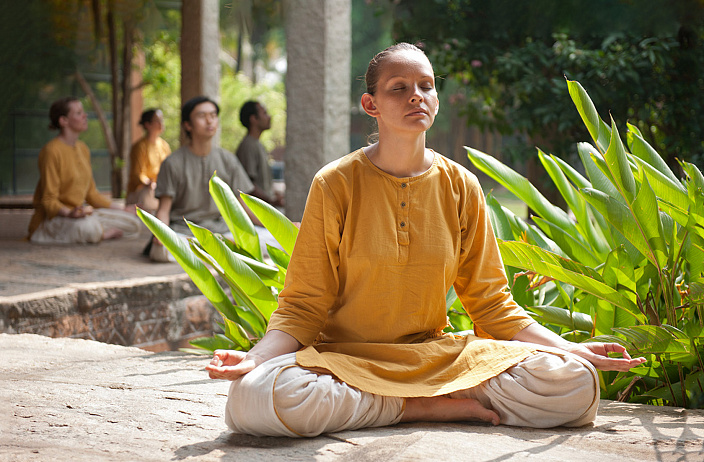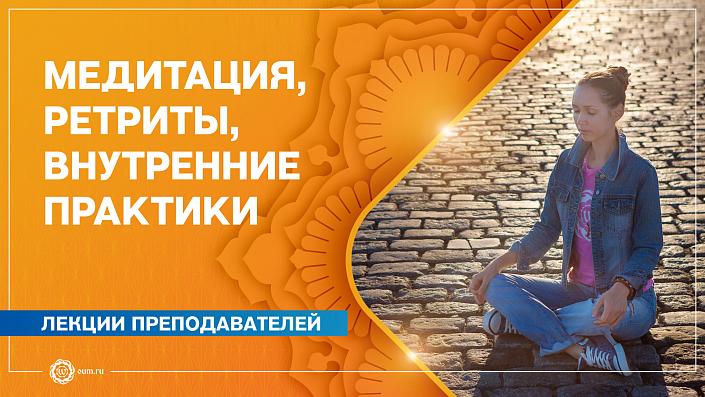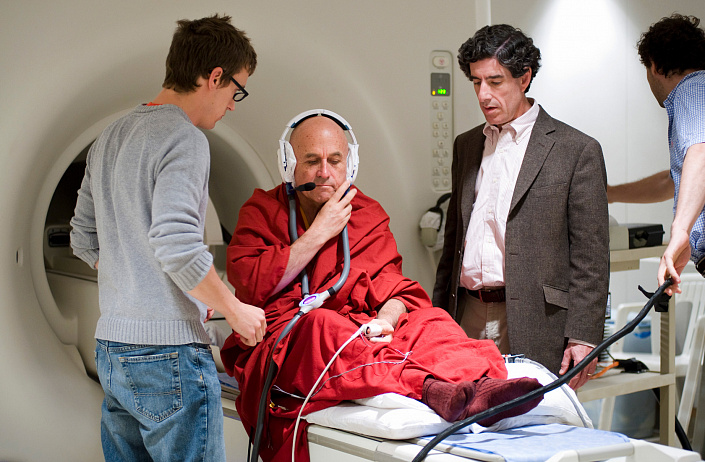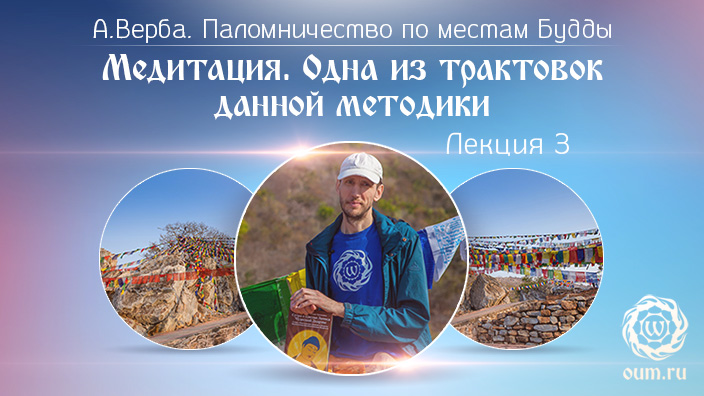MWe live in a time of freedom and almost unlimited access to information. And if before a person suffered from a lack of information, now – from oversaturation with it. At the same time, almost every person has the opportunity to extract from this huge stream of events and phenomena knowledge about self-improvement systems and accelerate their own evolution!
How do you organize these limitless arrays of facts and messages? How to develop the ability to see and build chains of events? How to expand our consciousness so that it not only keeps pace with the times, but also ahead of it? And finally, how to see the common in the great multitude of individual diversity of cultures, peoples, religions, people? ..
Yoga masters claim that meditation can help humanity in this (and not only). Very often in lectures you can hear that possibilities of meditation the transformation of consciousness is practically limitless, and the one who succeeds in this business acquires superhuman abilities!
Let’s try to figure out what is the essence of meditation and what she does to the person.
The word “meditation” itself is of Latin origin and literally means ‘meditation’. Most likely, you will not find this term in ancient yoga texts.
However, modern schools and teachers began to use it to facilitate understanding with Westerners. As a rule, meditation is understood as the state of deep concentration on any object, which can be achieved by going through several preliminary, but important steps. An ancient yoga treatise describing the stages of immersion in meditation, which is called the “Patanjali Sutra”, has survived to our time. The Patanjali Sutra deals with:
- pranayama (controlling thoughts and energy through breathing);
- pratyahara (cutting off feelings and attention from all external objects); – dharana (choosing and keeping attention on one selected object or visualization);
- dhyana (deep concentration on this object).
It is precisely the state of dhyana that is called meditation. How to prepare yourself for such practices is a topic for a separate article. Let’s just say that if a person intends to receive a serious the effect of meditation, he must lead a healthy lifestyle and follow a number of rules.
So, by the term “meditation” we mean several stages of the eightfold path of yoga according to Patanjali. Let’s figure out what the power of meditation and its influence per person.
One of the most beneficial exercises for life in society is pratyahara – cutting off attention from external objects. It can be sounds, smells, beautiful landscapes, memories, various emotional states – everything that surrounds a person. By training this ability, you will be able to realize your plans much better.
For example, you sit down at your computer to find information you are interested in on the Internet. But constantly pop-up news and ads from your area of interest divert attention away from the original task. And now you are already surfing the Internet … This will not happen if your ability to cut off everything that is superfluous is sufficiently developed.
Or an example with extraneous noises on the street, when you are trying to concentrate, but a cheerful company or repairs behind the wall distract your thoughts. Pratyahara also develops the ability not to succumb to information stuffing, which is now overflowing with the life of society and through which people are controlled. Meditation Helps abstract in everyday life from what you do not need, and concentrate on the main thing.
If a person has learned not to be distracted by external objects, then it will be easier for him to move to the next stage in meditative practice – to keep his attention on the selected object. It is also a very important quality for social life and the achievement of assigned tasks. Dharana and Pratyahara are the foundation for real meditation, deep and complete concentration on the object of concentration. Sometimes it happens that we cannot make an important decision for ourselves, because we lack experience, calmness, wisdom.
Man in meditation can see the answer to his question much more clearly and make a constructive and correct decision in almost any field of activity. Meditation helps because that during practice, a person’s addictions, passions and various conceptual obsessions, which, as a rule, prevent him from making adequate decisions, subside or completely disappear.
He can look at his problem with a clear look and find a balanced way out of almost any situation. But most importantly, he can move to a new level of being, feel freedom from his own limitations and know who he is!
An important point for obtaining effect in meditation is the pose. It is important that your back is straight and that you can sit still for a long time.
The best way to prepare for meditation practices will help hatha yoga classes. With this discipline, you will be able to master one or more seated asanas that promote meditation. The technique of performing the practice is based on keeping your attention on the breath. As you stretch in and out, concentrating on counting, you begin to go through the steps described above. It may be difficult at first to sit, then you need to choose a short period of time and gradually increase the session.
Meditation Research conducted since the 60s of the twentieth century. Attempts by scientists to find out does meditation work, led to fairly clear and specific conclusions, and also allowed the use of similar techniques to solve problems associated with physical ailments and mental disorders. Here is what the professor of the Department of Practical Psychology of the Omsk State Pedagogical University, Associate Professor, Doctor of Psychology A.F. Filatova writes about the scientific application of meditation techniques: “At present, in many countries of the world, both in the West and in the East, meditation is successfully used for prevention and treatment high blood pressure and cardiovascular disease.
It helps to get rid of obsessive states, anxiety, depression, increased aggressiveness, and improves concentration. In Russian psychology, meditation is interpreted as a completely real psychophysical process caused by self-action. Electrophysiological studies of the encephalograms of people in deep meditation show that their biorhythms are irreducible to sleep or wakefulness and make it possible to put forward hypotheses about the neurophysiology of special altered states of consciousness. ”
Scientists have found out why meditation works. It is surprising that many scholars who have explored the inner practices quite deeply themselves subsequently developed cultivation systems based on meditation techniques.
AF Filatova in her scientific article “Meditation and Personal Development” concludes:
A psychological analysis of meditation shows that the leading moment that gives it a unique feature is the temporary exclusion of the memory function from the complex of mental processes. It is this assumption that makes it possible to explain the origin of those mental phenomena that take place during meditation and during the period of its consequences. During meditation, the level of “own noises” of the brain becomes extremely low and, therefore, it becomes possible to use associative and integral processes to the fullest extent for solving certain problems, which the meditator formulates to himself.
Sometimes it happens that a person has such questions, the answers to which he cannot find in the outside world. Quests very often lead to knowledge of yoga and internal practices – various meditation techniques.
It is immersion into the depths of one’s consciousness and appeal to subtle structures that allows one to solve the most non-standard tasks. One important condition for successful meditation should be noted here. A person’s motivation should be somewhat selfless. The carrier of selfish consciousness from the point of view of yoga can harm himself.
Using meditation, a person strengthens all his qualities, including not the best ones. And if the harmful selfish tendencies are not recognized in time, this can lead to negative consequences not only for the practitioner, but also for his environment. That is why in ancient times knowledge about yoga was closed, and before teaching a person, sages assessed his moral characteristics and motivation.








